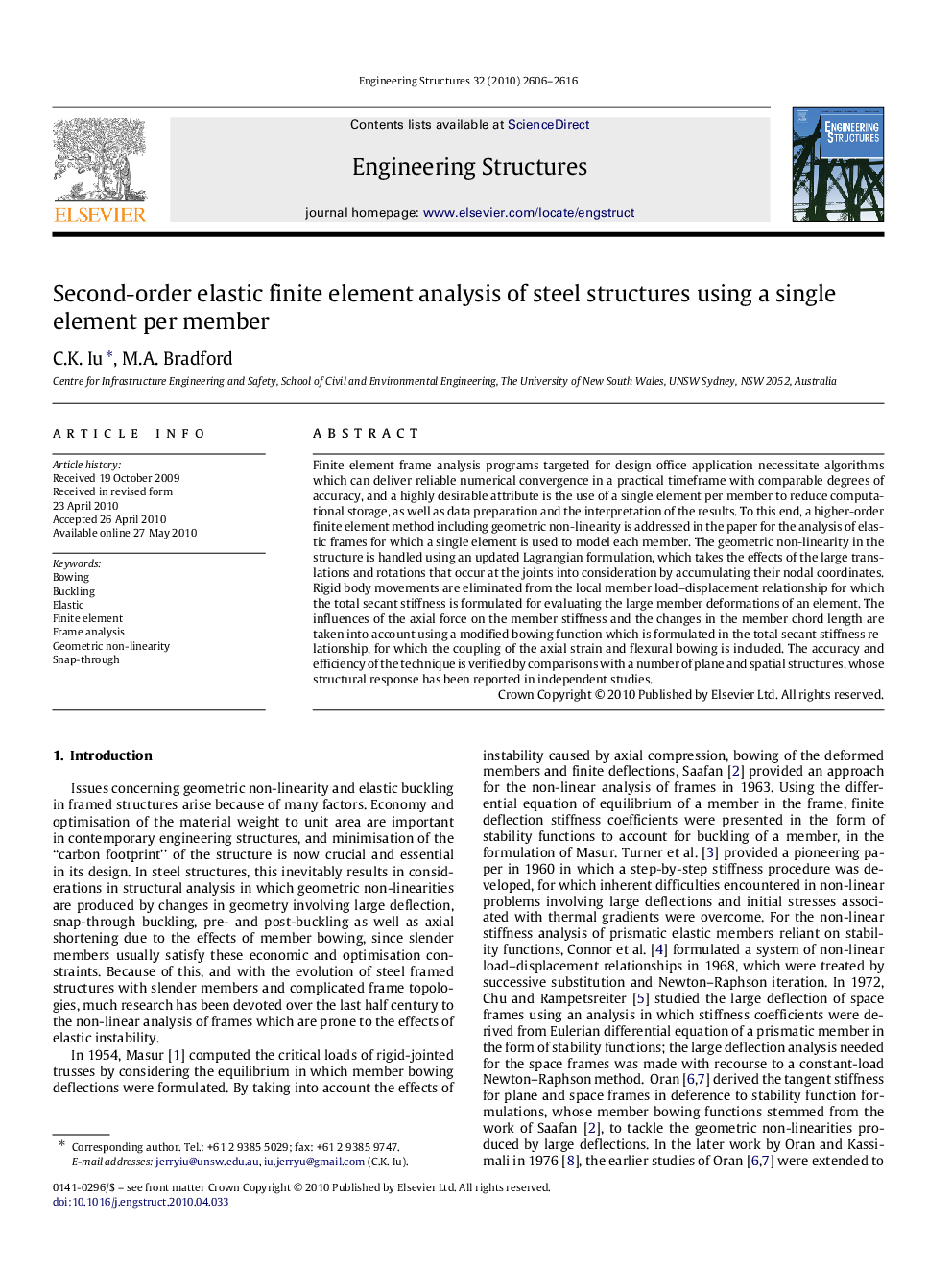| Article ID | Journal | Published Year | Pages | File Type |
|---|---|---|---|---|
| 268458 | Engineering Structures | 2010 | 11 Pages |
Finite element frame analysis programs targeted for design office application necessitate algorithms which can deliver reliable numerical convergence in a practical timeframe with comparable degrees of accuracy, and a highly desirable attribute is the use of a single element per member to reduce computational storage, as well as data preparation and the interpretation of the results. To this end, a higher-order finite element method including geometric non-linearity is addressed in the paper for the analysis of elastic frames for which a single element is used to model each member. The geometric non-linearity in the structure is handled using an updated Lagrangian formulation, which takes the effects of the large translations and rotations that occur at the joints into consideration by accumulating their nodal coordinates. Rigid body movements are eliminated from the local member load–displacement relationship for which the total secant stiffness is formulated for evaluating the large member deformations of an element. The influences of the axial force on the member stiffness and the changes in the member chord length are taken into account using a modified bowing function which is formulated in the total secant stiffness relationship, for which the coupling of the axial strain and flexural bowing is included. The accuracy and efficiency of the technique is verified by comparisons with a number of plane and spatial structures, whose structural response has been reported in independent studies.
